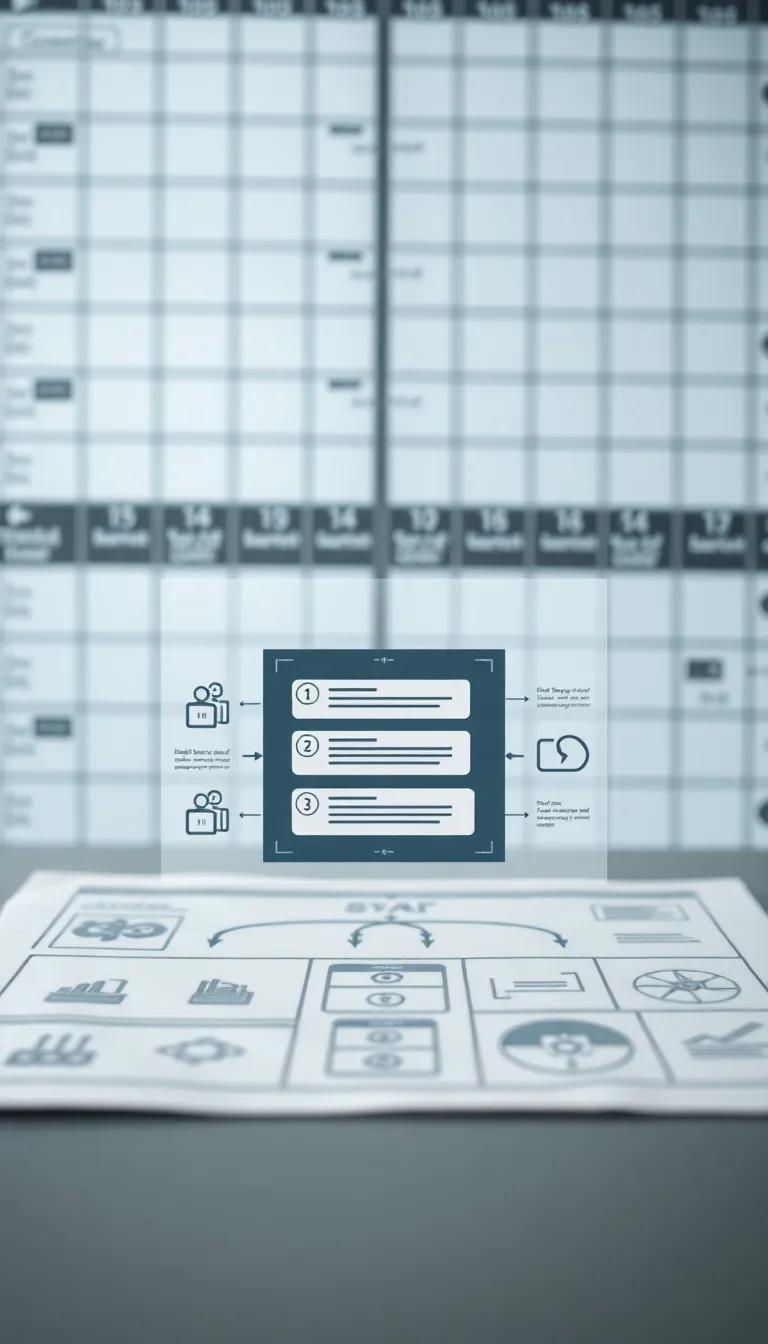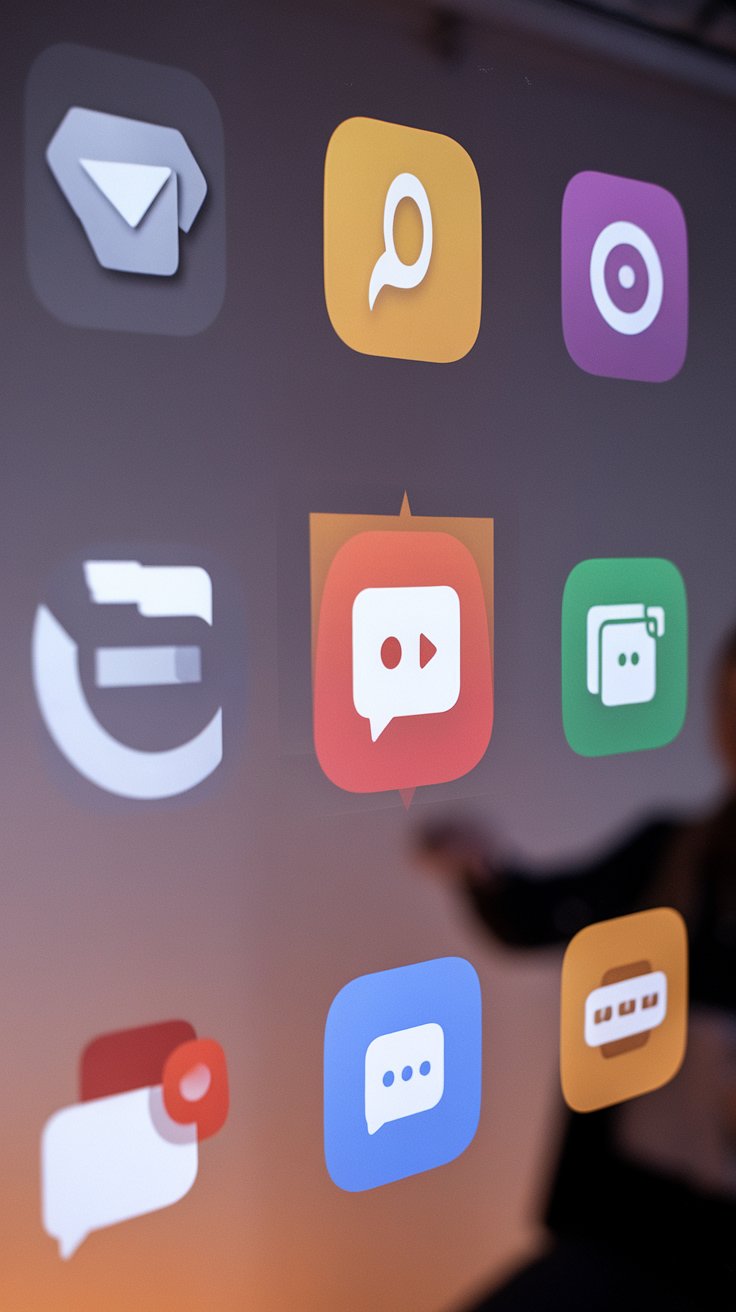Introduction
The digital landscape has transformed how businesses engage with customers, and one of the most effective tools in this realm is the free website chat widget. A strong strategy framework is essential to maximize user interaction, ensuring that the chat widgets not only provide support but also enhance the overall user experience. As online customer service continues to evolve, implementing a thoughtful and systematic approach is crucial for businesses aiming for high engagement and satisfaction.
This article will explore the intricacies of developing a robust strategy framework tailored to free website chat widgets. By delving into various dimensions such as design, functionality, user psychology, and analytics, we will illuminate how each aspect contributes to a compelling and engaging customer interaction. From understanding user needs to effective follow-up techniques, our in-depth discussion aims to equip businesses with the best practices for maximizing their chat widget’s potential.
Understanding the Role of Chat Widgets in Modern Engagement
In today’s online customer engagement landscape, chat widgets have emerged as pivotal tools for enhancing real-time communication between brands and their audiences. These widgets serve as a direct line of interaction, facilitating spontaneous conversations that can lead to improved customer satisfaction and loyalty. The immediacy they offer transforms the traditional customer service model, shifting it from delayed responses to instant feedback and assistance.
One major benefit of chat widgets is their ability to provide personalized customer experiences. When users engage through a chat widget, they often receive responses tailored to their specific inquiries, which fosters a feeling of being valued. This level of engagement not only cultivates trust but also encourages users to return for future interactions, enhancing brand loyalty. By integrating chat widgets, businesses can create a seamless transition from passive browsing to active engagement, thus driving conversion rates upward.
Another notable advantage is the accessibility they provide. Chat widgets can be available around the clock, catering to a global audience without the restrictions of traditional service hours. This means potential customers can have their queries addressed even outside standard business hours, reducing frustration and increasing the likelihood of successful conversions. The automation capabilities of chat widgets, such as AI-driven responses, also enable companies to handle high volumes of inquiries without sacrificing quality, freeing up human agents to focus on more complex issues.
The effectiveness of chat widgets is further amplified by their analytical capabilities. Brands can gather data on user interactions, understanding common inquiries and pain points. This data is invaluable in shaping future engagement strategies, ensuring that the business evolves in alignment with customer needs. Through consistent analysis of engagement metrics, companies can refine their approaches, ensuring that their chat support remains relevant and effective.
As customer expectations evolve, the role of chat widgets in enhancing user experience will only grow. By prioritizing real-time communication, companies not only enrich the customer journey but also foster a culture of responsiveness that can set them apart in a competitive market.
Defining Your Engagement Strategy Framework
Essential Components of an Effective Strategy Framework for Chat Widget Engagement
Crafting a robust engagement strategy framework for free website chat widgets requires thoughtful planning and goal-oriented approaches. The first step in forming this framework is defining clear objectives that align with your overall business goals. Without precise objectives, any engagement efforts may lack direction and ultimately fall short of enhancing user experience.
As part of the planning phase, consider identifying the target audience for your chat widget. Understanding who your users are will allow for more personalized and relevant interactions. Factors such as demographics, preferences, and behaviors should be thoroughly analyzed. This data can guide the development of tailored conversation scripts and interaction cues that resonate with users, thereby fostering meaningful engagement.
Set measurable goals for the chat widget’s functionality. These goals could include enhancing response times, increasing user satisfaction ratings, or improving the funnel for lead conversions. Utilizing key performance indicators (KPIs) provides the means to evaluate the effectiveness of your chat engagement strategy. For instance, tracking the number of chats initiated, user engagement duration, and satisfaction ratings can inform adjustments to your approach and aid in achieving set targets.
Another essential component involves establishing a well-structured conversation flow. The chat widget must engage users smoothly, allowing them to navigate effortlessly through inquiries. Designate potential pathways for conversations, ensuring that users receive correct and prompt answers to their questions. This not only keeps the interaction fluid but also demonstrates a commitment to user satisfaction, helping to build trust and loyalty.
Incorporating feedback mechanisms within the chat widget can further enhance user interaction. Prompt users to provide feedback on their experience after closing the chat. This invaluable input will help refine your chat strategies and address any performance gaps that may exist.
Stay adaptable and ready to amend your engagement strategy. Continual assessment of user interactions can reveal emerging trends and preferences. Regularly updating your strategy will ensure that your chat widget remains relevant and effective, fostering ongoing user engagement and enhancing overall satisfaction.
Planning Phase and Goal Setting
The initial phase of your engagement strategy should include comprehensive planning. Map out user journeys to visualize potential touchpoints where the chat widget can provide assistance or guidance. Collaborative brainstorming with your team can lead to innovative solutions that address common user pain points. During this phase, prioritize establishing goals that inspire growth, opting for both short-term objectives and long-term aspirations that will guide your chat strategies.
A well-defined strategy framework lays the foundation for a successful chat widget engagement endeavor. By meticulously planning and setting actionable goals, you can transform user interactions into valuable engagements that significantly improve the overall user experience.
Designing UserFriendly Chat Widgets Key Design Principles for Engagement
Creating a user-friendly chat widget is an integral aspect of engaging visitors on your website. A well-designed chat interface not only attracts users but also encourages interaction, thereby enhancing the overall user experience. By utilizing key design principles, businesses can develop chat widgets that are intuitive and effective, significantly improving engagement metrics.
Intuitive Interface Design
The first principle in designing a user-friendly chat widget is simplicity. The chat widget’s interface should be straightforward, allowing users to initiate a conversation with minimal effort. This can be achieved by employing a clean layout, using clear, legible fonts, and ensuring that all interaction buttons are easily accessible. The use of recognizable icons can further streamline the interface, making it clear how users can ask questions or seek assistance.
Visual Appeal and Branding
Another crucial aspect is the widget’s aesthetic appeal. By aligning the chat widget’s colors, fonts, and overall design with the brand identity, the chat tool not only becomes a functional asset but also reinforces brand recognition. Visual consistency builds trust with users, making them more likely to engage. Employing a friendly and visually inviting character or avatar can also add a human touch, enhancing user comfort in interacting with the chat feature.
Effective Positioning and Responsiveness
Positioning the chat widget strategically on the webpage is vital for maximizing visibility without interfering with users’ browsing experience. Widgets should be easily noticeable, yet not obstructive. Additionally, ensuring that the chat widget is responsive across various devices is essential, as users increasingly access websites via mobile devices. Adaptive design principles should be utilized, making sure the chat widget functions effectively and is easy to navigate, regardless of screen size.
Usability Testing
Incorporating user feedback through usability testing can help refine the chat widget design. Engaging real users in the testing phase can unveil pain points and preferences that may not have been initially considered. Iterative design based on user input fosters continuous improvement, leading to a more effective chat tool that resonates with the target audience.
Through these principles of intuitive design, visual appeal, strategic positioning, and usability testing, businesses can develop chat widgets that significantly foster user engagement, paving the way for meaningful interactions and improved user experiences. By ensuring that every design element serves to facilitate engagement, companies can effectively enhance their chat widget’s value as a marketing and customer service tool.
Effective Communication Techniques for Website Chat Widget Engagement
Engaging Users Through Tailored Communication Strategies
Effective communication is at the heart of fostering positive interactions through chat widgets on websites. When users engage with a chat widget, the primary goal is to create a seamless experience that makes them feel valued and understood. Employing specific communication techniques can significantly enhance user engagement and satisfaction. One foundational strategy involves personalizing the conversation. By utilizing user data, chat widgets can greet visitors by name and provide tailored responses based on their previous interactions or browsing history. This personalized approach not only makes users feel special but also increases the likelihood of them continuing the conversation.
Another key technique is to adopt a conversational tone that mirrors natural human interaction. Rather than relying on rigid scripts, chatbots should incorporate language that resonates with users, such as casual greetings or empathetic responses. Incorporating humor or a light-hearted tone can also make conversations more enjoyable and reduce any apprehension users may have when seeking assistance. This approach encourages users to engage more willingly, transforming what could be a mundane interaction into a delightful experience.
Proactive engagement is another strategy to consider. Waiting for users to initiate contact may lead to missed opportunities. Instead, chat widgets can provide timely prompts or invitations to chat when users linger on a page or exhibit behaviors suggestive of frustration, such as pausing on a page or repeatedly scrolling. This proactive outreach can demonstrate a commitment to helping the user, ensuring they feel supported during their visit.
Effective communication relies heavily on active listening. This entails acknowledging the user’s messages promptly and responding appropriately. Incorporating features that confirm receipt of a user’s question—such as “I’ve received your message, and I’m here to help!”—can reassure users that their queries are important and will be addressed promptly. Such acknowledgment fosters trust and encourages ongoing interaction.
Implementing Contextual Responses
Embedding contextual responses into chat interactions adds another layer of engagement. By analyzing the user’s journey on the website, the chat widget can offer insights, suggest articles, or even redirect users to relevant resources based on their current interests. This not only enhances the user experience but positions the brand as knowledgeable and attentive.
Employing effective communication techniques within chat widgets is crucial for enhancing user engagement. By personalizing interactions, adopting a conversational tone, engaging proactively, practicing active listening, and implementing contextual responses, brands can create meaningful and impactful interactions that resonate with users long after their visit.
Leveraging Analytics for Continuous Improvement
Enhancing User Engagement Through Data Insights
In the context of a robust chat widget strategy, analytics serve as the backbone for continuous improvement. Analyzing performance metrics allows businesses to understand user behavior, preferences, and areas in need of enhancement. Central to this process is the collection of essential data points which can include the number of interactions, resolution rates, response times, and user satisfaction levels. Monitoring these factors enables businesses to make informed decisions about optimizing their chat widget engagements.
Engagement metrics offer a window into how users are interacting with the chat widget. For instance, tracking the frequency and duration of chat sessions can help identify whether customers find the interactions valuable. High engagement rates may indicate that users are effectively finding solutions to their inquiries. In contrast, data that shows low interaction frequency could highlight potential barriers, such as complex navigation or inadequate prompt responses.
The importance of A/B testing in this context cannot be overstated. By experimenting with different chat responses, button placements, and even the introduction of AI capabilities, businesses can gather quantitative data that informs what strategies best resonate with their audience. Analytics enable organizations to pivot and adapt their chat strategies based on real-time feedback, making every interaction count.
Feedback Loops for Continuous Enhancement
Incorporating user feedback into the analytical framework can bring about transformative changes. Surveys or feedback forms can be integrated within the chat widget itself to gather insights immediately after interaction. Questions focused on the user’s experience—like ease of use, resolution satisfaction, and overall engagement—can provide rich qualitative data that complements the quantitative analytics. This approach creates a feedback loop that will not only enhance user experience but also foster a culture of continuous improvement within the organization.
Analyzing chat transcripts for sentiment can illuminate user satisfaction and emotional responses to various interactions. Businesses can use natural language processing tools to identify trends in user sentiment, tailoring responses accordingly and ensuring that the chat widget is responsive to user emotions and needs. This comprehensive analytic strategy can illuminate patterns and inform effective response strategies, ultimately enhancing the effectiveness of chat widgets in engaging users.
Ensuring Compliance and Best Practices for Chat Widget Engagement
Strategic Compliance Measures
When integrating chat widgets into websites for enhanced user engagement, adhering to compliance standards and best practices is paramount. Companies must prioritize user privacy and data security. Ensuring compliance with regulations such as the General Data Protection Regulation (GDPR) and the California Consumer Privacy Act (CCPA) is fundamental. These regulations mandate transparent data handling practices that require businesses to obtain explicit consent from users before collecting personal information. An effective strategy involves incorporating a privacy notice within the chat widget interface, clearly outlining what data is collected, how it will be used, and the options available to users regarding their data.
Businesses should establish protocols for handling user data responsibly. This includes employing encryption methods to protect the data transmitted through chat widgets and frequently reviewing data storage practices to mitigate risks associated with data breaches. Regular audits ensure that compliance measures remain aligned with evolving regulations and that user trust is continually maintained.
Best Practices for User Engagement
Implementing chat widgets effectively also involves following best practices that enhance user experience while complying with relevant standards. A user-friendly interface is fundamental; chat widgets should be easy to locate and use. Designing the widget for mobile responsiveness ensures accessibility across different devices, catering to an increasingly mobile-centric audience.
Businesses should also consider the timing and context of engagement. Utilizing proactive messaging techniques, such as initiating a chat when users linger on a page, can significantly increase interaction rates. However, it is critical to avoid being intrusive. Offering users the option to opt-out or minimize the chat window contributes to a more personalized experience.
Training chat representatives to handle conversations with empathy and professionalism is equally vital. This not only improves user satisfaction but also fosters a positive image of the brand. Furthermore, regularly updating the chat widget based on user feedback, performance metrics, and industry trends not only optimizes user engagement but also aligns with compliance best practices, reinforcing an organization’s commitment to both user satisfaction and legal adherence.
These strategic compliance measures and best practices create a robust foundation for maximizing the utility of chat widgets while ensuring a seamless and secure user experience. Such diligence prepares businesses not just for present demands but also for future advancements in chat widget technology and user interaction.
Future Trends in Chat Widget Engagement Examine Emerging Trends in Chat Widget Technology and User Engagement
Predictions for User Engagement Techniques and Chat Widget Development
The landscape of chat widgets is evolving rapidly, driven by advancements in technology and changes in user expectations. As businesses increasingly incorporate chat widgets to enhance user experience, understanding the future trends in this area becomes paramount for strategic planning. One anticipated trend is the integration of artificial intelligence (AI) and machine learning algorithms. These technologies are expected to refine chat interactions, enabling chatbots to provide more personalized, context-aware responses. This would significantly improve user engagement by allowing the widget to adapt to a visitor’s behavior and preferences in real-time.
Natural Language Processing (NLP) is another area of growth, making interactions smoother and more intuitive than ever. Improved NLP capabilities will allow chat widgets to better understand and respond to user queries, leading to a more human-like interaction experience. This taps into a key aspect of user engagement: the need for interactions that feel organic and less transactional. Trends reveal that consumers are yearning for conversational experiences that resonate with their expectations, which encourages companies to prioritize this technology in their strategy frameworks.
Another promising development lies in the integration of multimedia features. Future chat widgets may incorporate video support, allowing users to share images or initiate video calls directly within the chat interface. This shift not only enriches the user interaction but also allows businesses to demonstrate products and services more effectively, thereby increasing conversion rates.
Proactive engagement through chat widgets is anticipated to rise. Businesses will move beyond just reactive support; by using data analytics, they can predict user needs and initiate conversations at opportune moments. For instance, a chat widget could pop up when a user lingers on a product page for too long, offering assistance or suggesting related products. This level of engagement can create value for the user while simultaneously driving sales for the business.
The significance of omnichannel integration cannot be underestimated. With users engaging across multiple platforms, chat widgets that seamlessly integrate with social media, email, and even SMS will offer a cohesive user experience. A holistic approach to user engagement that maintains continuity across channels will become a standard expectation, enhancing the overall satisfaction of customers.
Conclusions
Establishing a strong strategy framework for free website chat widget engagement is paramount for enhancing customer interactions and satisfaction. By focusing on user-centered design and employing effective communication techniques, businesses can significantly improve their online presence and foster loyalty among their customer base. The integration of analytics further empowers organizations to continuously refine their strategies, ensuring they remain responsive to evolving user expectations.
As we have explored in this article, the success of a chat widget extends beyond mere functionality; it requires a holistic approach that encompasses visual appeal, proactive engagement, and insightful data analysis. By adopting these principles, businesses not only optimize their immediate customer interactions but also position themselves competitively in the ever-changing digital marketplace.




















